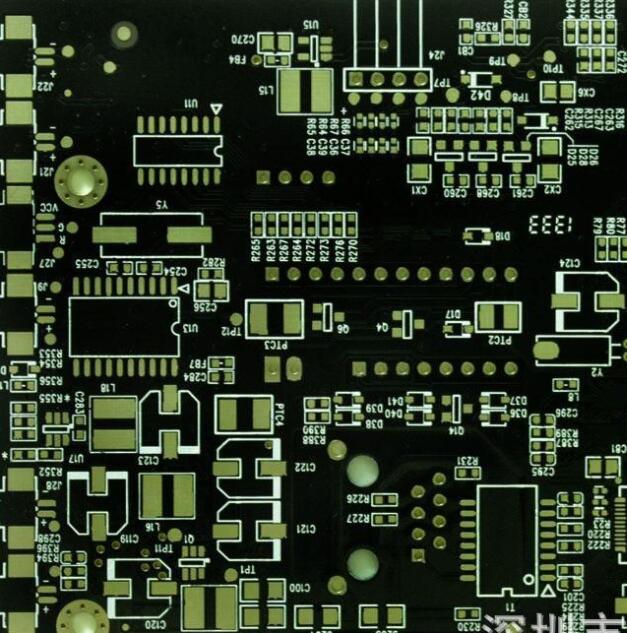Study on the causes and solutions of solder balls in PCB soldering
In SMT process research and production, reasonable surface assembly process technology plays a vital role in controlling and improving the quality of SMT production. We are on the wave
The mechanism of tin beads produced in peak soldering and reflow soldering is analyzed, and corresponding process methods are proposed to solve them. The presence of solder balls in wave soldering and reflow soldering indicates the process
It is not completely correct, and there is a danger of short circuit in electronic products, so it needs to be eliminated.
Tin balls in wave soldering solder balls often appear in wave soldering. There are two main reasons:
a. Because when soldering the PCB board, the moisture near the through hole on the printed board is heated and turns into steam. If the metal plating on the hole wall is thin or there are voids, water vapor will pass through the hole wall
Rule out, if there is solder in the hole, when the solder solidifies, water vapor will create voids (pinholes) in the solder, or extrude the solder to produce solder balls on the front of the printed board.
b. The solder balls produced on the reverse side of the printed board (that is, the side contacting the wave crest) are caused by improper setting of some process parameters in wave soldering. If the amount of flux applied
Increasing or setting the preheating temperature too low may affect the evaporation of the components in the flux. When the printed board enters the wave crest, the excess flux will evaporate at high temperature and remove the solder from

Splashes out of the tin bath, producing irregular solder balls on the printed circuit board.
In response to the above two reasons, we take the following corresponding solutions:
a. The appropriate thickness of the metal plating in the through hole is very important. The minimum copper plating on the hole wall should be 25um, and there should be no voids.
Second, use spray or foam to apply flux. In the foaming method, when adjusting the air content of the flux, the smallest possible bubbles should be produced. The foam and the
The PCB contact surface is relatively reduced.
Third, the temperature of the preheating zone of the wave soldering machine should be set so that the temperature of the top surface of the circuit board reaches at least 100°C. Proper preheating temperature can not only eliminate solder balls, but also avoid
The circuit board is deformed by thermal shock.
The mechanism of solder ball formation in reflow soldering The solder balls produced during reflow soldering are often hidden between the sides of the rectangular chip component or between the fine pitch pins. Placed on the component
During the process, the solder paste is placed between the pin and the pad of the chip component. As the printed board passes through the reflow oven, the solder paste melts and becomes liquid.
If the wetting is not good, the liquid solder will shrink and make the welding seam insufficiently filled, and all the solder particles cannot aggregate into a solder joint. Part of the liquid solder will flow out of the weld,
Form a solder ball. Therefore, poor wettability of solder with pads and device pins is the root cause of the formation of solder balls.
Cause analysis and control methods There are many reasons for the poor solder wettability. The following mainly analyzes the reasons and solutions related to related processes:
a. Improper setting of reflow temperature curve. The reflow of solder paste is a function of temperature and time. If it does not reach a sufficient temperature or time, the solder paste will not reflow. Preheating zone
The temperature rises too fast, and the time to reach the top temperature is too short, so that the moisture and solvent in the solder paste are not completely volatilized, and when they reach the reflow soldering temperature zone, it will cause
Moisture and solvent boil, splashing solder balls. Practice has proved that it is ideal to control the temperature rise rate of the preheating zone at 1~4°C/s.
b. If solder balls always appear in the same position, it is necessary to check the metal plate design structure. The corrosion accuracy of the template opening size does not meet the requirements, and the size of the pad is biased.
Large, and the surface material is soft (such as copper template), resulting in the outline of the missing solder paste is not clear, bridging each other, this situation mostly occurs in the fine-pitch devices
When the pad is missing, a large number of tin beads between the pins will inevitably be produced after reflow soldering. Therefore, according to the different shapes and center distances of the land patterns, choose a suitable template
Material and template production process to ensure the quality of solder paste printing.
c. If the time from mounting to reflow soldering is too long, due to the oxidation of the solder particles in the solder paste, the flux will deteriorate and its activity will decrease, which will cause the solder paste to not reflow and the solder balls will
produce. Choosing a solder paste with a longer working life (we think at least 4 hours) will reduce this effect.
d. In addition, the PCBA with the wrong solder paste printing is not cleaned sufficiently, leaving the solder paste on the surface of the printed board and the through holes. Before reflow soldering, the placed components are realigned,
Place it to deform the missing solder paste. These are also the causes of solder balls. Therefore, the responsibility of operators and process personnel in the production process should be strengthened, and the process should be strictly followed.
Requirements and operating procedures are required for production, and the quality control of the process is strengthened.